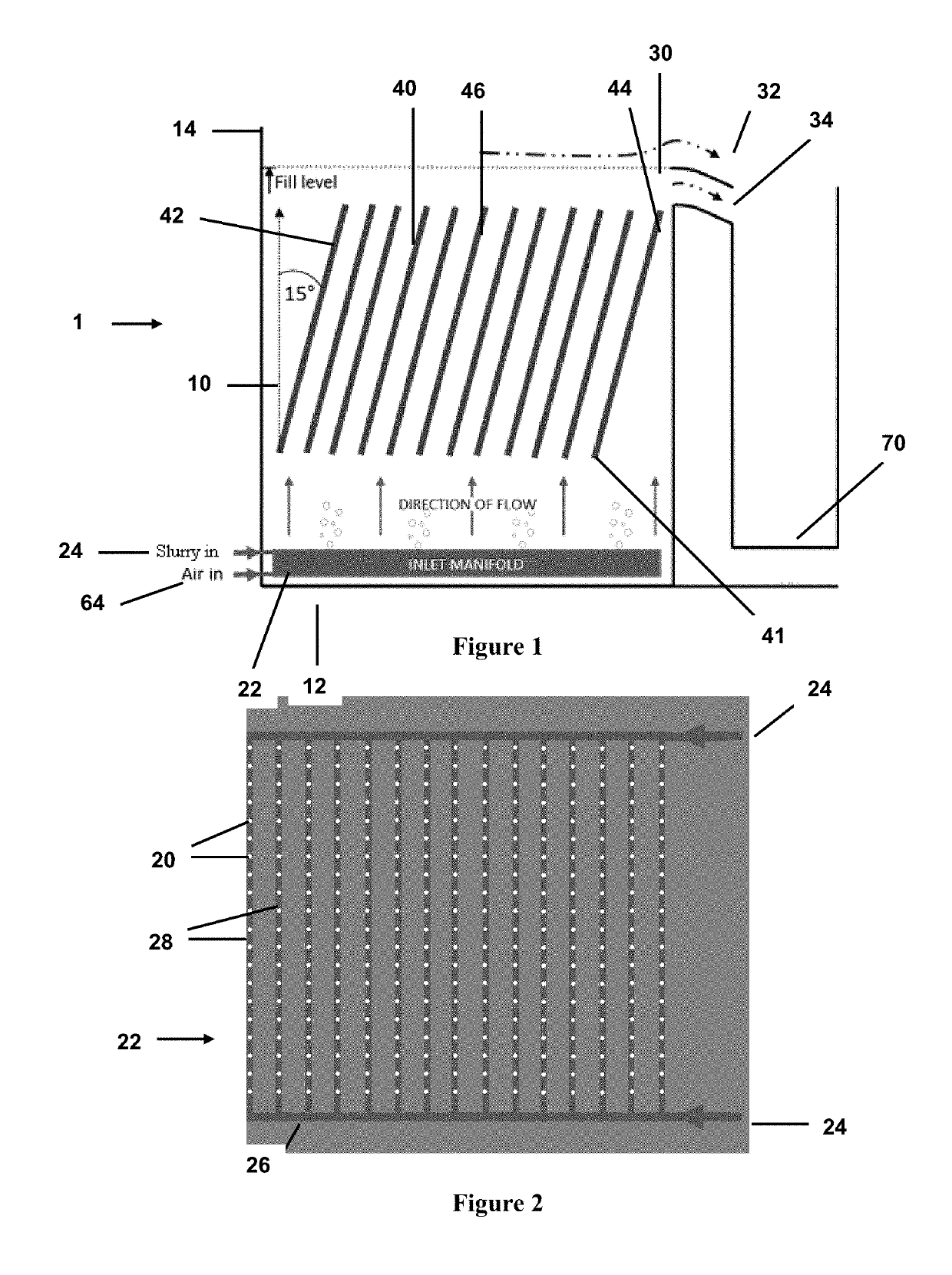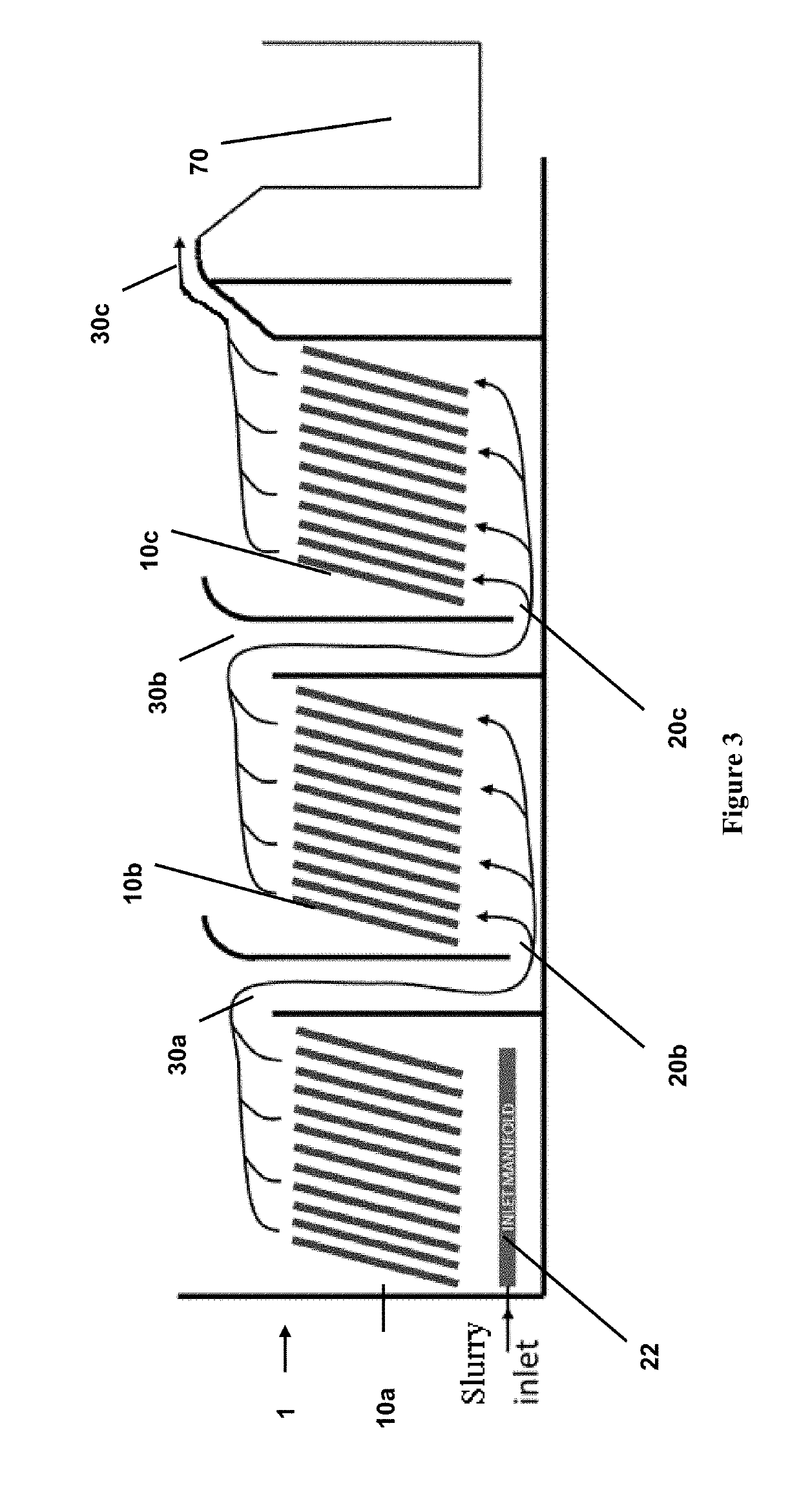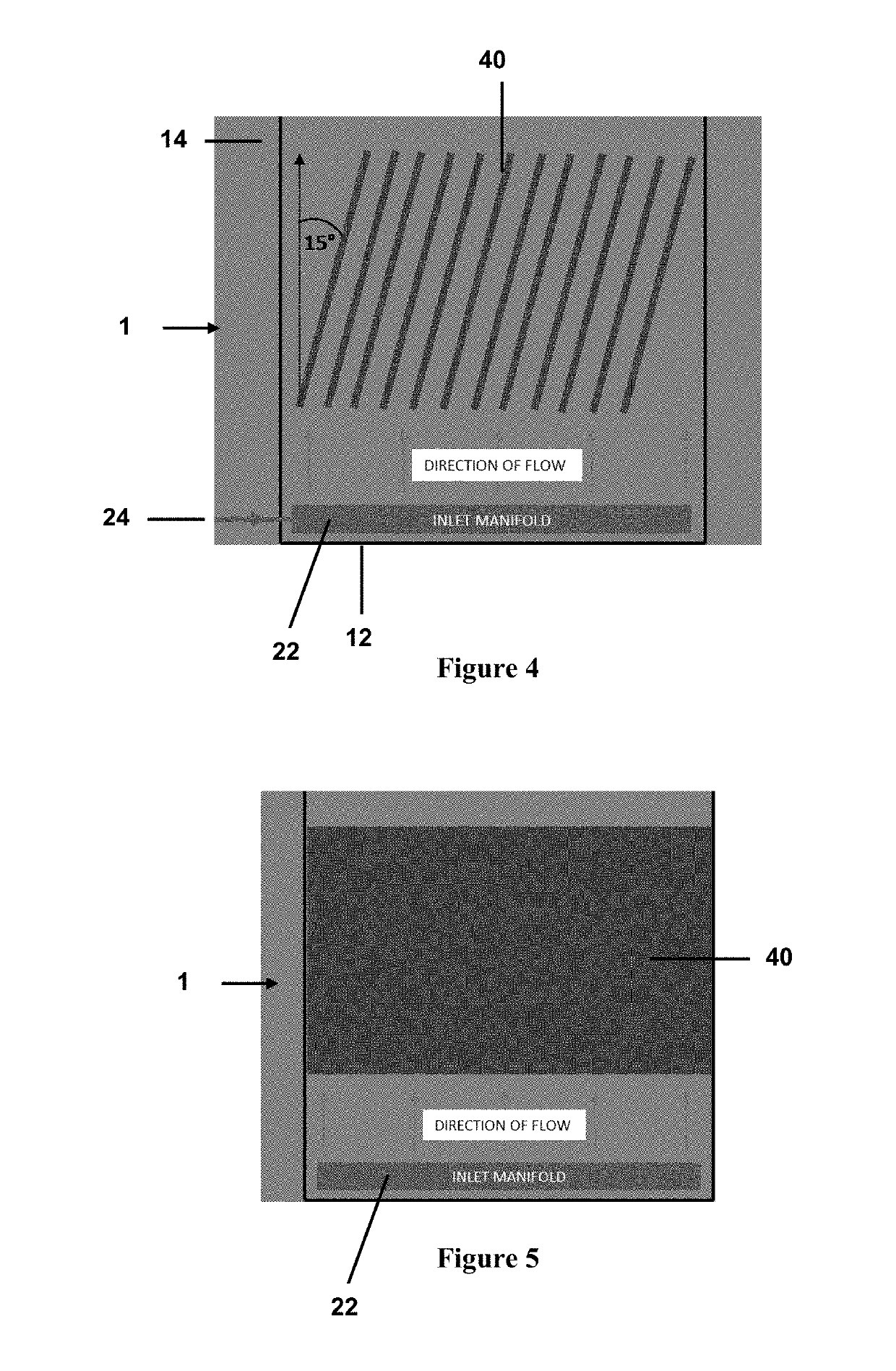Process
- Summary
- Abstract
- Description
- Claims
- Application Information
AI Technical Summary
Benefits of technology
Problems solved by technology
Method used
Image
Examples
example 1
[0362]An example process for improving the grade of iron in a slurry including iron oxyhydroxide minerals will now be described with reference to FIGS. 33 to 37.
[0363]A schematic of an example process is provided in FIG. 33. In this process, an aqueous iron ore slurry 202 was generated during the wet beneficiation processing of a typical banded-iron-formation (BIF) ore from the Pilbara region (Australia). The iron reject stream (‘slimes’) consists of the flow from the deslime circuit overflow in the ore beneficiation plant (OBP), with a saline water flow of typically 60,000-70,000 total dissolved solids (TDS) carrying fine to very fine particulate iron oxyhydroxy mixed with clay and other waste rock.
[0364]The aqueous slurry 202 included solid matter all having a particle size below a screen size of 1 mm with the majority by weight in the very fine size fraction of less than 100 microns.
[0365]The aqueous slurry is normally fed into a hydrocyclone 204. The hydrocyclone 204 then separa...
example 2
[0389]Following the collection of the additional data and SEM of the amorphous content, the design parameters of the electrochemical treatment were re-configured in order to encourage the reductive dissolution of hematite (to produce magnetite) as shown in formula [10] below. The electrochemical treatment was performed using the apparatus 201 of FIGS. 19-29. The apparatus 201 of FIGS. 19-29 has longer electrodes 240 than the apparatus of FIG. 11, which provides increased duration of action of the electrochemical treatment and the electrical field (in the apparatus of FIG. 11 the electrodes were 150×100 mm in size. In the apparatus of FIGS. 19-29 the electrodes were 200×75 mm in size). A simple carboxylic acid, in the example methanoic (acetic) acid was believed to exhibit a catalytic effect in the magnetite formation reaction as shown in reactions [4] and [5]:
CH3COO−+8Fe(OH)3→8Fe2++2HCO3+15OH−+5H2O [4]
2OH−+Fe2++2Fe(OH)3→Fe3O4+4H2O [5]
[0390]The electrochemical treatment was perform...
example 3
[0401]The hydrocyclone overflow 208 (tailings mud / slurry) was further subjected to electrochemical treatment using the apparatus 201 shown in FIGS. 19-29. As before the apparatus has a 1 L treatment chamber and 13 mild steel electrodes with reversible polarity every 30 seconds. The electrodes were of dimensions 200×75 mm were 3 mm thick, spaced 3 mm apart.
[0402]In the electrochemical treatment 210, the hydrocyclone overflow 208 was adjusted to a 4 L slurry with approximately 2.5 wt % solids (i.e. 25 g / L of suspended solids).
[0403]The 4 L of slurry was then recirculated through the apparatus 201 of FIGS. 19-29 at a residence time of 30 seconds. The conductivity of the supernatant water of the 4 L slurry was 5.33 mS before the electrochemical treatment described below. Flow to the treatment chamber 210 was via a peristaltic pump, adjusted to give a consistent flow rate through the treatment chamber 210 of 1.0 litres per 30 seconds or 2 litres per minute. The electrochemical treatment ...
PUM
| Property | Measurement | Unit |
|---|---|---|
| Temperature | aaaaa | aaaaa |
| Length | aaaaa | aaaaa |
| Length | aaaaa | aaaaa |
Abstract
Description
Claims
Application Information
 Login to View More
Login to View More - R&D
- Intellectual Property
- Life Sciences
- Materials
- Tech Scout
- Unparalleled Data Quality
- Higher Quality Content
- 60% Fewer Hallucinations
Browse by: Latest US Patents, China's latest patents, Technical Efficacy Thesaurus, Application Domain, Technology Topic, Popular Technical Reports.
© 2025 PatSnap. All rights reserved.Legal|Privacy policy|Modern Slavery Act Transparency Statement|Sitemap|About US| Contact US: help@patsnap.com



